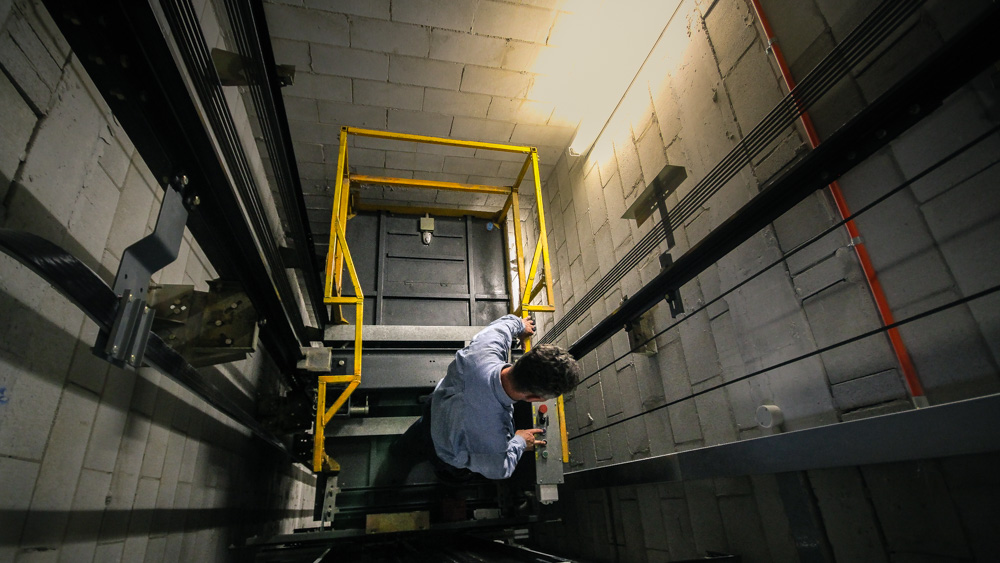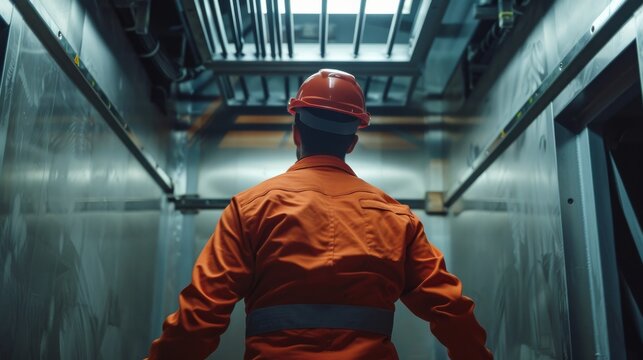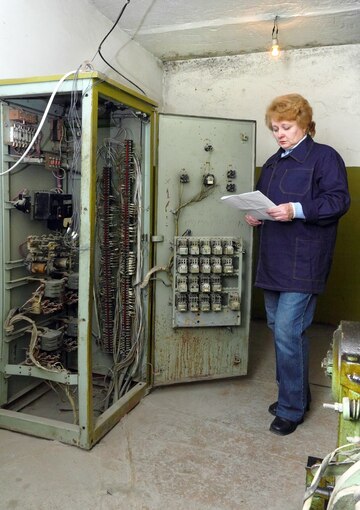Checking Out the Comprehensive Measures Required for Lift Upkeep
In the realm of building maintenance, making certain the proper performance and safety of lifts is critical. The complexity of lift systems calls for a precise technique to upkeep. From regular examinations to tactical innovation strategies, a holistic sight of maintenance is essential. Nevertheless, in the ever-evolving landscape of lift innovation and safety criteria, there are thorough actions that must be meticulously followed to guarantee optimal efficiency and conformity. By resolving key elements such as positive upkeep schedules, security checks, and emergency situation preparedness, a thorough understanding of the details involved in lift upkeep can cause improved efficiency and safety and security.
Routine Assessments
When it concerns ensuring the durability and safety and security of your lift system, routine examinations are vital. These routine checks play a crucial function in recognizing any prospective problems prior to they rise into significant issues, ensuring the safe and smooth operation of the lift. By conducting normal evaluations, maintenance groups can proactively resolve damage, damaged elements, or any type of other concerns that may jeopardize the lift's performance or security.
Throughout these examinations, trained specialists thoroughly check out numerous elements of the lift system, including mechanical components, electric systems, safety and security functions, and general architectural integrity (lift maintenance contract). They seek indicators of wear, corrosion, leakages, or any kind of abnormalities that could show a trouble. In addition, they validate that all safety systems are operating properly and in compliance with guidelines. By identifying and dealing with problems early, these examinations help protect against expensive repairs, downtime, or safety and security dangers, inevitably expanding the lifespan of the lift system and guaranteeing the well-being of its customers.
Proactive Upkeep Schedules
Executing aggressive upkeep routines is important for taking full advantage of the effectiveness and durability of lift systems. By sticking to an aggressive maintenance strategy, lift owners can attend to potential concerns before they escalate right into significant troubles, eventually minimizing downtime and pricey fixings. Aggressive maintenance entails normal evaluations, lubrication of relocating components, screening safety attributes, and changing used components. These set up upkeep tasks not only help in avoiding breakdowns yet additionally contribute to maintaining the lift's performance at optimal degrees.
A well-structured aggressive upkeep schedule should outline particular jobs, frequencies, and responsible personnel. When developing these routines to make sure the lift operates securely and efficiently, it is crucial to comply with supplier recommendations and sector standards. In addition, recording upkeep activities and keeping comprehensive records can supply useful insights right into the lift's efficiency gradually, assisting in recognizing patterns and making informed upkeep decisions.

Safety Compliance Checks
Ensuring safety and security conformity via complete checks is paramount in keeping lift systems' integrity and guarding individual well-being. Safety and security conformity checks include a thorough examination of various elements, consisting Source of electric systems, mechanical parts, emergency brakes, doors, and other crucial safety and security functions. These checks are necessary to identify any possible hazards or breakdowns that can jeopardize the lift's procedure and put customers in danger.
Normal safety and security compliance checks should be conducted by qualified professionals in adherence to sector regulations and criteria. These checks help in finding issues beforehand, enabling timely repairs and preventative upkeep steps to be executed. Additionally, keeping comprehensive documents of safety conformity checks is vital for tracking the lift system's efficiency with time and showing conformity with security regulations.
Tools Upgrades and Modernization
Enhancing lift systems through devices upgrades and innovation is necessary for improving effectiveness and my response security standards in vertical transportation. As modern technology advances, older lift systems might end up being obsolete, leading to decreased integrity and potential safety and security dangers. By spending in equipment upgrades and innovation, building proprietors can guarantee that their lifts fulfill existing sector standards and policies.

Along with functional benefits, equipment upgrades and modernization tasks can also boost the aesthetic appeals of the lift, providing an extra enticing and modern experience for go to this website passengers. Inevitably, purchasing lift upgrades and innovation is a positive technique towards guaranteeing the durability, safety and security, and performance of vertical transport systems.
Emergency Readiness Preparation
An efficient emergency situation preparedness plan is important for making certain the safety and swift feedback in instance of unforeseen incidents including lift systems. Emergency situation preparedness preparation for lift systems involves a systematic technique to reduce threats, make certain guest safety, and lessen downtime throughout emergency situations.
Trick parts of an emergency situation preparedness strategy for lifts consist of clear communication procedures, regular training for lift operators on emergency procedures, and regular drills to check the efficiency of the strategy. lift maintenance contract. In addition, the strategy ought to detail particular functions and obligations for all stakeholders included, consisting of structure monitoring, upkeep personnel, and emergency situation responders
In the occasion of a lift breakdown or entrapment, having a well-defined emergency situation plan can aid in collaborating a efficient and prompt action to ensure the safety and health of passengers. Timely communication, access to emergency tools such as interaction gadgets and emergency situation lights, and expertise of emptying procedures are crucial aspects of an extensive emergency situation preparedness prepare for lift systems. By focusing on emergency preparedness preparation, structure supervisors can improve the total safety and dependability of their lift systems.
Final Thought
To conclude, the detailed procedures required for lift upkeep include normal inspections, positive upkeep schedules, security compliance checks, devices upgrades and modernization, and emergency situation preparedness preparation. These procedures are important for making sure the security, dependability, and performance of lifts in various settings. By executing these actions, lift proprietors can lessen the danger of mishaps, extend the life-span of their tools, and comply with sector guidelines.

During these assessments, educated professionals completely examine numerous facets of the lift system, including mechanical components, electric systems, safety and security features, and overall architectural honesty.Guaranteeing security compliance through detailed checks is extremely important in keeping lift systems' reliability and protecting individual well-being. Keeping thorough documents of safety compliance checks is essential for tracking the lift system's performance over time and demonstrating compliance with security guidelines.
By focusing on emergency readiness planning, building supervisors can enhance the overall security and reliability of their lift systems.